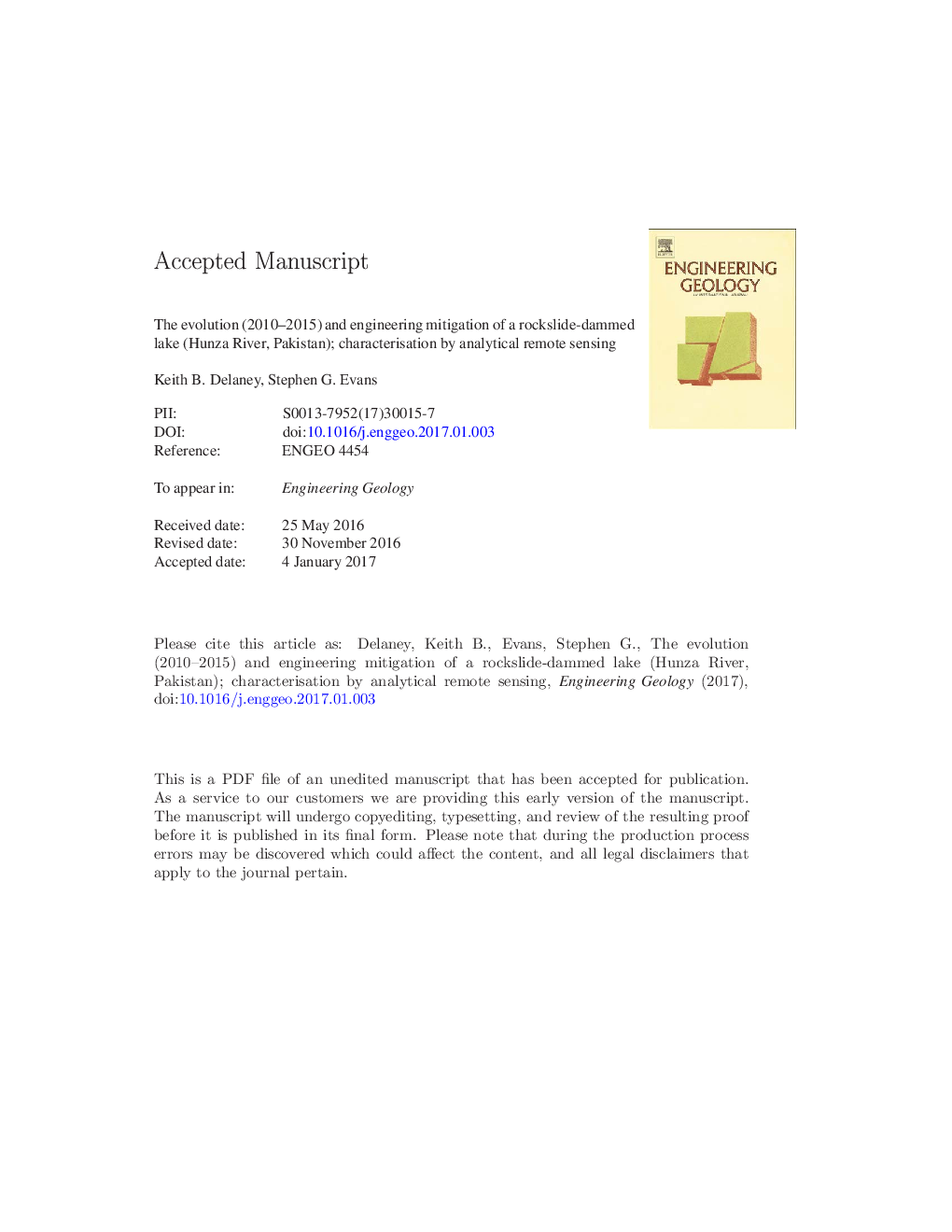| Article ID | Journal | Published Year | Pages | File Type |
|---|---|---|---|---|
| 5787590 | Engineering Geology | 2017 | 36 Pages |
Abstract
The remnants of rockslide dams are widespread in the deeply incised river valleys of the northwest Himalayas and adjacent Pamir Mountains of Central Asia. In January 2010 a major rockslide (estimated volume ~ 55 Mm3) dammed the Hunza River (NW Pakistan) and a rockslide-dammed lake (Lake Gojal) immediately began to form. The lake overtopped the rockslide dam 145 days later through a spillway excavated in the surface of the debris by Pakistan authorities. Lake Gojal successively reduced in volume in response to spillway widening and deepening in engineering works up to May 2013; on August 28, 2015 (Day 2063 of impoundment) a remnant lake still remains. Using SRTM 3-arc-second digital terrain data and ten high-resolution satellite images from the period March 2010-August 2015, we document the river-damming environment of the Attabad rockslide, track and quantify the development of rockslide-dammed Lake Gojal and calculate lake areas and volumes at various stages of filling, stable overtopping, and partial draining to a final stable configuration. We introduce a method of delimiting lake shorelines by a pixel method which produces a mean elevation surface in the SRTM DEM; this technique results in accurate estimates of shoreline elevation and corresponding lake areas and volumes. We estimate the maximum volume reached by Lake Gojal, 51 days after overtopping, to have been approximately 455 Mm3. Using this data we also evaluate the mitigation works carried out by Pakistan authorities and find that i) they achieved an initial reduction of about 26% in the maximum possible volume of Lake Gojal that would have been reached without engineering intervention, and ii) as of August 28, 2015, in drawing down the lake by ~ 40 m, they had achieved a 72% reduction in the maximum volume reached by Lake Gojal after overtopping without a catastrophic release taking place. The emplacement of rockslide dams and the behaviour of their impounded lakes are critical hazards to communities and the development of infrastructure, including hydroelectric facilities, in this region of Central Asia. We show that a combination of high-resolution optical satellite imagery and SRTM 3-arc-second digital topography is very effective in producing key first-order data on rockslide-dammed lakes for geomorphic and hydrological analysis as well as the evaluation of engineering mitigation.
Keywords
Related Topics
Physical Sciences and Engineering
Earth and Planetary Sciences
Geotechnical Engineering and Engineering Geology
Authors
Keith B. Delaney, Stephen G. Evans,
